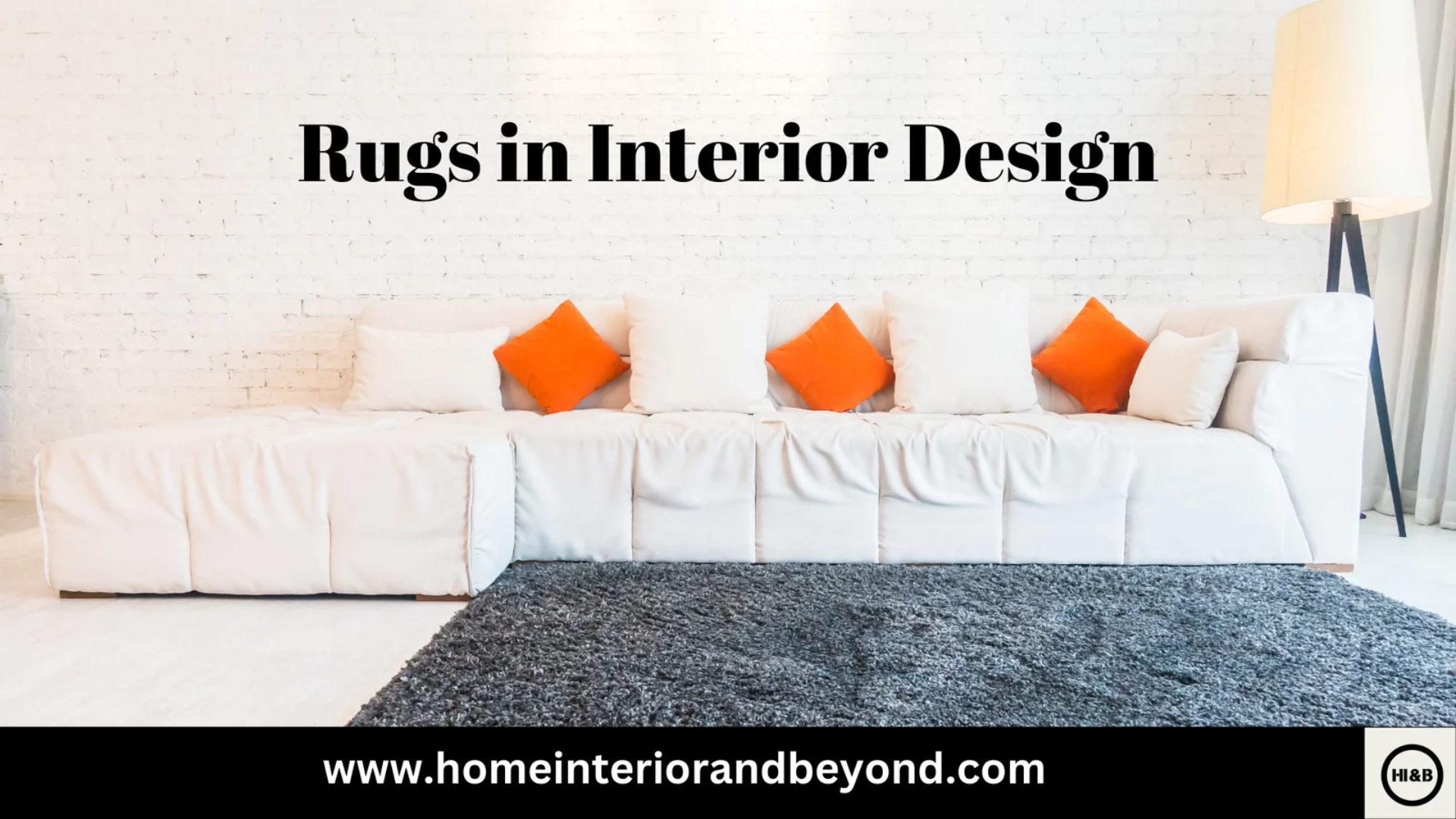Rugs are one of the most underrated elements in interior design. They often get overlooked in interior design, but rugs can improve the ambiance of a room, provide comfort, and add much-needed structure. Whether it’s a living room, bedroom, or dining area, A well-chosen rug can unify the elements in a room, creating a harmonious design.
Why Rugs Matter in Interior Design
Rugs play an important role in defining the character and flow of a space. Here’s how they make a difference
Boundaries: For open-concept spaces, rugs separate different areas. For instance, under a seating arrangement in the living room, placing a rug can viscerally separate that area from a dining space.
Warmth and Comfort: They add comfort. Hard floors become warmer because rugs are insulative, during colder months, hard floors can be less comfortable.
Adds Beauty: These rugs add both aesthetics and style as each rug comes with a different color, pattern, and texture. You can easily achieve a minimalist, bohemian, or traditional look just with a single rug.
Sound Dampening: Sound dampening is also another feature of rugs, as they dampen noises, which is why you need them in your living room or even your home office.

How to Choose a perfect rug
Choosing the perfect rug takes much thought and consideration. Here’s a guide on making the right choice:
Size Matters
The size of the rug. Living room rugs should be of an appropriate size such that the front legs of your furniture would absolutely stay on it. For the dining area, ensure that chairs can be pulled in and out of the room without leaving the rug.
Measurement: Measure your space before buying a rug to avoid having one that is either too small or too large.
Choice of Material
The rugs may be made of wool, cotton, jute, silk, and even synthetic fibers. Wool rugs are strong and soft to provide the needed resistance in high-traffic places. Cotton rugs are easy to clean and easily affordable. Jute provides a natural, earthy feel to the place. Silk gives a luxurious feel but needs extra care.
Tip: Depending upon the location of the rug, choose the material for the rug. High traffic requires more strong materials. Color and Pattern
Rug: A Rug Can be either a background or can dominate as well. A patterned rug would really stand out in a neutral room with furniture and walls. In contrast, in an already boldly decorated room, the rug should be neutral.
Tip: Select colors that complement your existing palette and play with patterns.
Rug Shape
Rugs can come in all shapes and sizes – rectangular, round, oval, and square. Rectangular rugs are the most common but a round rug is sure to break up stiff angular spaces and introduce a little play in the room.
Tip: In interior design, the shape of your furniture as well as the room’s layout will influence the shape of the rug.
Placement
The placement of a rug is almost as important as its size. Place the rug in the living room under the front legs of the sofa and chairs for the dining room, making sure the entire set will fit comfortably on the rug. Placing a rug under a bed, with equal space on both sides, creates a cozy look in bedrooms.
Tip: place rug pads to avoid slipping and extend the life of your rug.
Conclusion
In the world of interior design, a rug is more than just a floor covering; it can add richness and enhance the overall design of a room.
If the right rug is chosen based on size, material, color, and placement, it will lend a cohesive, stylish look to the space. Remember, a good rug ties a room together, but one that’s well-chosen anchors a room.So, whether you are updating a single room or redecorating an entire home, be sure to appreciate the difference a good rug can make in the transformation of your space!
FAQ
How big of a rug should I have in my living room?
Generally, this will depend on the size of your living room and the placement of furniture. A rule generally followed is that the rug should be large enough to fit at least the front legs of your furniture and a few inches of floor space exposed around the edges.
How do I clean and care for my rug?
Different types depend on the material. If it is either wool or synthetic, then vacuum frequently. For rug pieces in less-than-appropriate condition, deep cleaning with professional service will be necessary; hand wash small rugs. Avoid chemicals based on type, and read the rug instructions.
Can I put layers of rugs in a room?
Yes, layering can add depth and texture to the space. For example, a small patterned rug on top of a big neutral-colored rug will add visual interest. The rugs must complement one another in both color and texture.
What material is best used for the heavy traffic area?
Wool and synthetic fiber rugs are great for heavy-use areas like halls and living rooms. These materials are sturdier, stain-resistant, and more tolerable with even wear and tear than extremely fragile materials like silk.
What is the best rug to use in the dining room?
The rug should be large enough to accommodate larger chairs that may pull out and still stay on the rug. The rug needs to be made from a material that can easily get cleaned; the reason is simple: dining areas are the most at-risk areas for spills.




